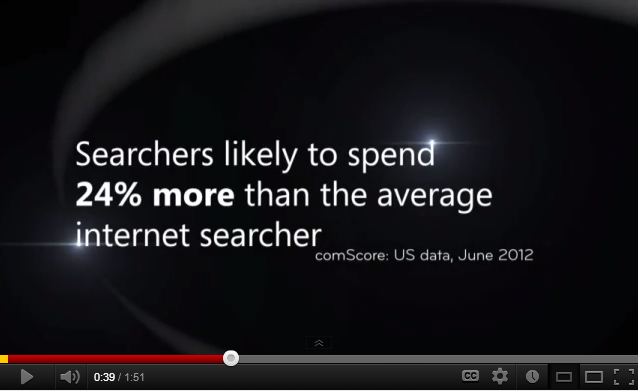Marketers might be focusing on their holiday campaigns, but they must begin looking ahead to 2013. According to the Content Marketing Institute’s latest B2C study, content marketing usage will remain widespread, with 86 percent of respondents planning to engage in content creation moving forward. Content campaigns will include an average of 12 tactics and SEO and PPC ads can be used to amplify well-written copy.
 Marketers should focus their attention toward the development of thorough SEO-friendly content marketing strategies, but it’s also important to support those programs with supplementary PPC content. Bing, through its latest Bing Ads network, could be an increasingly essential platform in 2013. The company recently unveiled new data that it hopes will encourage more marketers to consider using its Ad network for PPC campaigns.
Marketers should focus their attention toward the development of thorough SEO-friendly content marketing strategies, but it’s also important to support those programs with supplementary PPC content. Bing, through its latest Bing Ads network, could be an increasingly essential platform in 2013. The company recently unveiled new data that it hopes will encourage more marketers to consider using its Ad network for PPC campaigns.
According to Bing, advertisements on its network reach an audience of more than 151 million searchers – 46 million of whom don’t use Google at all. Additionally, the company notes that its users spend 24 percent more than the average internet searcher and 5.4 percent more than Google users.
According to comScore’s October 2012 qSearch report, Microsoft Sites earned 16 percent of all search traffic throughout the month – up 0.1 percent month-over-month. Yahoo! Sites accounted for 12.2 percent of total online searches. More, Microsoft sites ranked second in total searches with 2.8 billion – up 9 percent from the previous month – and Yahoo! had 2.1 billion, which is up 8 percent from September 2012.
Optimizing ad content and earning spots on coveted SERPs (Google and beyond) could drive traffic to brands’ websites. Accompanying promotional Ads on the Bing Network with well-written copy has the potential to retain consumers’ attention longer and help a site get better paid search placement for lower costs. Campaigns that utilize content creation practices and search marketing techniques reach Bing’s expansive network of people and take advantage of consumers’ higher spending powers.




